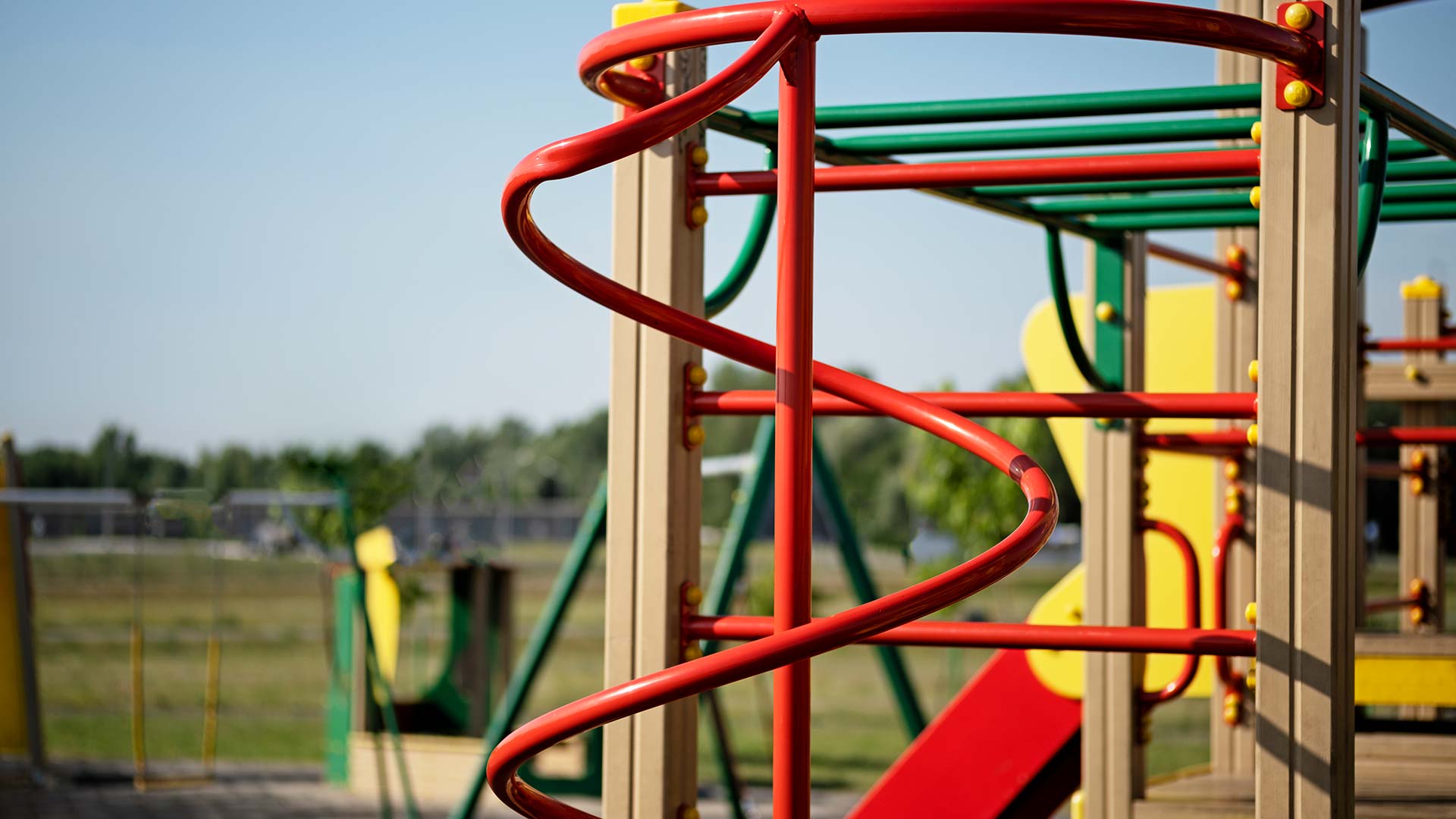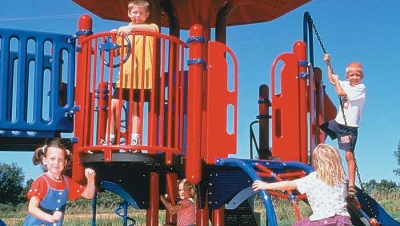When I took my son to his first day of kindergarten in August of 1990, I knew the public school's playground was not as safe as it should be. What was I to do? Since I worked for the local park district I had experience and knowledge from which to form an opinion on the status of my son's playground. If I made a big deal about the condition of the playground, it might become a political situation that could jeopardize the current school district/park district relationship. Regardless, I opened my mouth to the principal, and guess what? Several months later I was the co-chair of the PTO New Playground Committee, but that is another story.
So who is assessing the overall condition and safety compliance of your child's outdoor classroom? Each year parents place their children in the public or private school environment assuming they will be kept safe. In most instances, this is an accurate assumption, but can you be sure?
I believe most problems with our school playgrounds result from the low-priority playgrounds seem to have in comparison to all the other challenges schools face in today's reality. Our school boards and school administrators are faced with making many decisions during the annual budget process. If all these decision-makers understood the value and importance of play, it might change their priorities. In addition to these fiscal challenges, I am not sure teachers and playground aides understand and agree on the importance and impact play can have on a child's development.
I don't understand how parents can accept this message if it is, in fact, true for their particular school district. Someone has to educate parents, teachers, principals, and elected school board members about the importance of play and age-appropriate play environments in a child's development. Providing playgrounds is only part of the answer. Assuming every school has a playground, I question if they were designed, installed, and are now being maintained in accordance with the recommended guidelines and standards. This leads to a much bigger question. Who is going to be the one to carry the torch for your school's playground? It might as well be you.
By now you might be asking yourself how to change the mindset of your school's decision makers? Let me provide you with a few facts to help make your case. Several years ago an interesting article written by Monty Christiansen, Penn State University, was published in Today's Playground Magazine. Monty highlighted some of the current injury data from the United States Consumer Product Safety Commission (CPSC). TheCPSC report stated school playgrounds account for 45 percent (70,290) of the public playground injuries, and public parks account for 31 percent (48,422). So is this good news or bad news? Let's look at some history.
Injury statistics are constantly being referenced in most of the playground safety publications. The first CPSC Handbook for Public Playground Safety, released in 1981, stated that in 1977 an estimated 93,000 injuries associated with public playground equipment were treated in hospital emergency rooms. A subsequent 1978 to 1988 CPSC study reported the number had increased to 170,200 annually. Of these 170,200 injuries, 70 percent (120,000 injuries) involved playgrounds in public locations where public schools and public parks each accounted for 40 percent (48,000) of the injuries.
A more recent CPSC study completed from November 1988 through October 1999 revealed that playground-related injuries were again on the rise to an estimated 205,860, but there is more to the story. Of this number, 75 percent (156,040) of injuries occurred on equipment designated for public use. Another 23 percent occurred on home playground equipment. This study revealed more accidents requiring emergency room treatment occurred on public school grounds (70,290 or 45 percent) than on our public parks (48,422 or 31 percent).
The bottom line is that more supervised pre-school and elementary school age children receive hospital emergency room treatment annually for injuries that occur on school playground equipment than on our nation's generally unsupervised public park playgrounds. This public park number is almost identical to the number of children injured on public park playgrounds ten years earlier, yet school-related injuries almost doubled. Why are more children being injured on school playgrounds than on our unsupervised public park playgrounds?
There are many factors at issue here; however, I would like to think it is because of the work of the National Recreation and Park Association (NRPA) and its National Playground Safety Institute (NPSI), which coincidentally was formed in 1990. NPSI was formed by and run by a group of volunteer playground safety experts who contributed their playground-expertise to develop the Certified Playground Safety Inspector Program and Exam.
The first comprehensive playground safety course of its kind was held in Baltimore, Md. in 1991, and since that time the CPSI program has instructed thousands of playground designers, installers, salespeople, managers, operators, inspectors and supervisors from almost every conceivable owner of public playgrounds in the world. However, most of these course participants historically came from the public park and recreation sector. This trend is beginning to change, but owners and operators of school playgrounds have a lot of catching up to do if they wish to reverse the current trends in injury data.
An increasing number of CPSI courses have been made up primarily of participants from the public school sector. This is a start, but we need to do more to encourage school administrators, principals and elected school board officials to attend the CPSI course even if they don't take the certification exam, in order to get a complete understanding of playground safety issues while hopefully gaining a better understanding of the importance of playgrounds in childrens's development. These decision-makers need to understand the importance of having trained in-house staff who can correctly inspect, maintain, and repair our school's capital assets while protecting our country's most valuable asset, our children.
This is going to take some time, and we need your help. The NRPA is beginning to get the word out to the schools through partnering with its 50 state affiliate park and recreation organizations. These affiliates market and host the CPSI training programs throughout the country. The dates, locations, and contact numbers, plus many playground safety-related products and publications, can be found by visiting the NRPA's website, nrpa.org.













